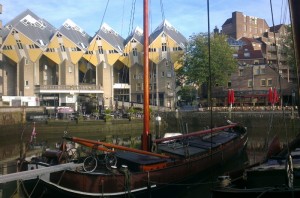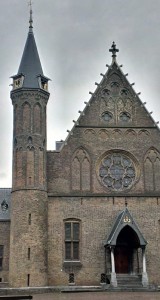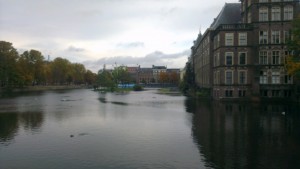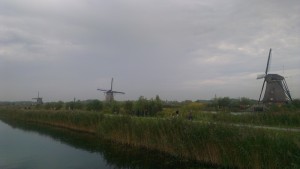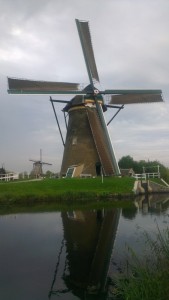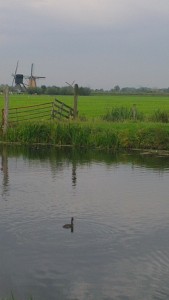Sunday morning, Rotterdam. I woke up early and went down to breakfast. The breakfast room/bar/communal area was mostly quiet. I grabbed some breakfast and charged my electronics. I kept thinking about an article a friend wrote about how to deal with power on the road. The weather outside was better than it had been the night before. Before too long, I was on my way.
I walked past the Erusmas Bridge on my way to the subway station. There were two travellers ahead of me at the subway ticket machine. I watched as they realised they didn’t have change, shrugged and went to take the tram instead. If that failed, they’d take the bus. I am amazed by (and jealous of) the remarkable oversupply of public transport systems in the Netherlands.
Before I left town, I went to see the Cube Houses. The Netherlands is a strange place. Or perhaps it just feels strange to me. For example, the country seems to spend a lot of time creating strange statues and building odd houses. In Rotterdam probably the most famous, and certainly the strangest, is the Cube Houses.
In the 1980s, architect Piet Blom was commissioned to build an unusual bridge over a busy road in Rotterdam. What he created became an icon of the city. The yellow cubes are actual houses where people live. One has even been converted into a backpackers hostel. Another has been turned into a museum. The architect apparently saw his design as representing trees and, together, a wood. I’m not sure I see that. I’m not sure it needs the symbolism – these strange houses are pretty spectacular all on their own.
From Rotterdam, I travelled to The Hague. I could have taken the Metro all the way but I really am very fond of trains. So I hopped a train from Rotterdam Centraal to Den Haag Centraal instead and settled back to enjoy the short trip filled with beautiful views.
The Hague. It sounds so grand and so distant. The train drew up and people rushed off. The train station was under renovations. Outside, I tried to get my bearings (which is harder than it sounds when you’re working without a map). I headed along the road to the left. In no time I was entranced with the beautiful buildings. It really is a stately city, decorated, like a beautiful cake, with angels and cherubs and delicate balconies, looking out on soaring trees. Beautiful old buildings and memorials to hundreds and hundreds of years of history.
Along an alley (well, pedestrian walkway with trendy cafes, but still), around a corner and there stood a large statue and a curio wagon,, a clear indication that this was somewhere important, and wandered through the arch. It was. This is Binnenhof, the home of the Dutch parliament since 1446. Inside was a large courtyard, lined with neat buildings. In the centre, stands Ridderzaal (Hall of Knights), which, according to the internet, is used for the state opening of Parliament on Prinsjesdag, when the Dutch monarch drives to Parliament in the Golden Carriage and delivers the speech from the throne. As I stood in the courtyard, the bells began to ring.
I walked past a lake full of seagulls (an artificial lake called Hofvijver, it turns out) with the most beautiful views of the Binnenhof. I wandered in the direction of Grote Kerk, one of the town’s main churches and the place where, according to the brief research I’d done, many of the Dutch royals have been married. It is a beautiful church, expanding out through various programmes and associations to neighbouring buildings. There was a sign on the stairs leading down to the basement that read “Hoop”.
It was strange to see the church so completely surrounded by commerce. Although, on a Sunday just after noon, most shops and restaurants were only just beginning to open. By the time I headed back towards the station, couples and friends and businessmen (or perhaps diplomats) were sipping fancy coffees and ordering expensive breakfasts at sidewalk cafes.
I had hoped to see the International Palace of Justice while I was there, but figuring out the bus or tram system with no guidebook, on a Sunday, was too much for me that day. I’m so glad I went to the Den Haag though, even if it was only for a few hours. It’s beautiful and warm and full of such wonderful history. If any of my friends ever move there, fair warning that I’ll definitely be coming to stay.
Back at the station, there was still time before the next train. I sat on a bench beside a pond and watched someone feeding the ducks and geese and seagulls and relaxed for the first time in a long while.
